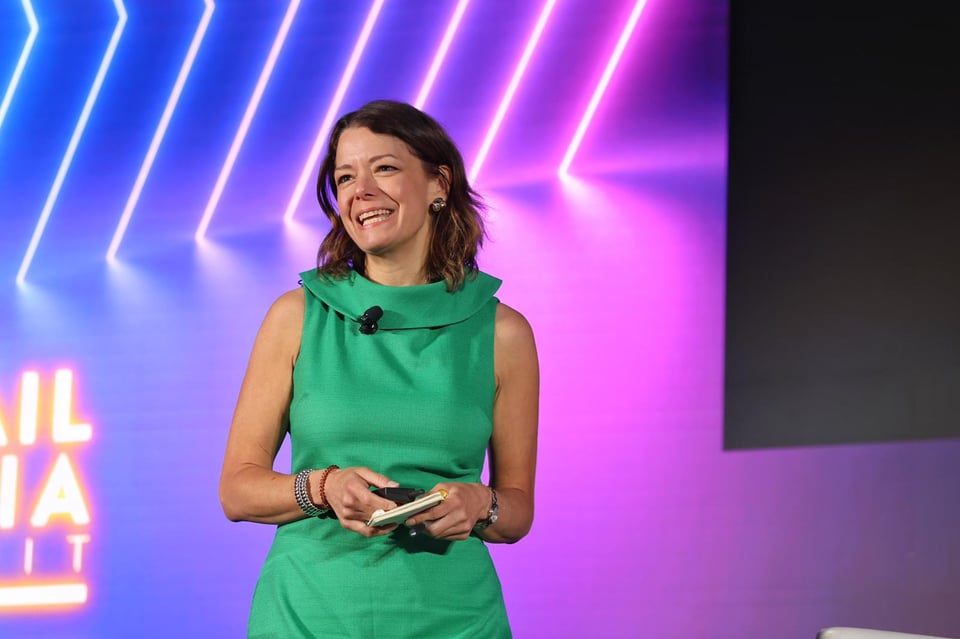If you are a brand selling on Amazon through their retail channel, chances are you’ve heard about CRaP. CRaP is an acronym that stands for Can’t Realize any Profit, Amazon’s label for items that are structurally unprofitable for them to sell in their retail channel. In case it isn’t clear from the acronym, CRaP items are candidates for removal from Amazon’s retail channel. Here’s why this matters to your brand.
Seriously, how did they come up with this acronym?
I was working at Amazon when the term, and the program, was developed and rolled out by the Finance department. Finance laughed at their cleverness. The buying team, who actually talked to vendors, did not. While the term might roll off Amazon buyer’s tongues nowadays, back then, my team stared in stunned silence, mortified. We were comforted to learn that the term was not meant for external consumption, only as an inside joke at company that was still struggling to be a viable competitor of Walmart. (Humor is not generally the cornerstone of Finance departments.)
Fast forward several years and tens of billions of dollars in Amazon topline revenue later, and Amazon is not only a viable Walmart competitor, it is an industry leader in many areas. Unfortunately, this Fortune 500 company’s brief cameo of their inner 7th grader has given us a new term making its way through the industry. As a result, many vendors I work with in my consulting business now tortured with CRaP. They receive automated emails about CRaP, pay CRaP allowances, have their items turned off due to CRaP, talk to their buyer about managing CRaP, and have items kicked out of promotions, AMS, and Subscribe & Save due to being on a CRaP watchlist.
Amazon cares a lot about CRaP, and here’s why you should, too.
Amazon doesn’t want to grow your CRaP; in fact, they’ll make sure it doesn’t grow.
You’ll fall out of free marketing (Automation & Personalization) – Why would Amazon let their world-class automated marketing engine promote products that are unprofitable for them? Enough said.
No Subscribe & Save for you – Your CRaP items, sorry to say, are blocked from Subscribe & Save. Only items in good standing can be in Subscribe & Save. Subscribe and Save is an incredible program, providing you with a nice growth trajectory, consistent orders, loyal customers, and access to a special store and marketing programs. If you carry consumable products, you want to be in Subscribe & Save. However, if you have CRaP, your items are not welcome.
You also can’t play in AMS – Amazon Marketing Services (Sponsored Products, Headline Search – you know, those placements that look like Amazon’s organic search results? The really effective, high ROI ones?) is currently the best way to drive your own marketing on your brand. The pay-per-click model, ability to set budgets and optimize keywords, and high ROI make it a very attractive program for brands of all sizes. But sorry, your CRaP is not allowed.
If your category has Levels of Service (LOS), forget about getting into the top tier – Many categories at Amazon operate internally with a Levels of Service model. This helps them focus their attention on key strategic brands. Higher LOS vendors get more marketing (sometimes free!) better SLAs for their Q&A, and dedicated people on the Amazon side to help them. They also get the benefit of the doubt. Which can be nice. Vendors with a lot of CRaP are simply not considered for LOS.
Someday soon, you will stop getting orders – Since CRaP items are unsustainable for Amazon, your business, depending on how many of your items are CRaP, is a ticking time bomb for Amazon. When the bomb explodes, your level of profit loss to Amazon has become untenable for them, and they will stop ordering your product.
You might be making your problem worse – here’s how:
Are you continuing to drive traffic to items that are unprofitable for Amazon? Tagging Amazon and those items in your own marketing, sending social channels to them to purchase…all of your marketing activities, both on and off Amazon, will drive more sales of your items that are unprofitable for Amazon. Do this enough, and you’ll hit a threshold on some buyer’s report – now you’re officially CRaP (if you weren’t before), and Amazon will eventually stop ordering from you (see above).
I’ll just spend my way out of it with ads through Amazon Media Group (AMG)! That should make up for it, right?
It’s true, AMG ads are expensive, and buying them will make Amazon’s automated systems think your items are more profitable than they are. However, giving Amazon money for AMG is just a band-aid. They’ll figure you out real quick, and Amazon will stop ordering from you (see above). Also, you’ve just made your problem worse in driving more traffic to these items (see above again).
Help! I have CRaP, and Amazon might turn it off. How do I un-CRaP it?
Dive deep, as Amazon would like to say. Why are your items CRaP? Here are a few reasons I’ve seen, and what to do about them:
Short expiration dates, high minimum orders, unstable vendor supply chains – Do your products have short expiration dates? High minimum orders? Do you have an unstable supply chain, or a lot of variability in lead times? All of these things can make Amazon’s systems over-order, leaving them overstocked and marking down product. Frequent product markdowns usually means CRaP.
Low retail price/weight ratio products – If your products have a low retail price/weight ratio (such as dog food, cat litter, and potting soil), it can be tougher to find a path forward. Are there different pack sizes that make better sense for Amazon economically? Can you package the product differently to incur the least amount of extra cost? Can it be a Pantry-only item? Amazon has an incredibly efficient supply chain, but it was designed to sell individual products, not market baskets full of items with low average retail prices. In many cases products can be bundled into a two pack, sold as a case/inner, or larger sizes to overcome some of the supply chain costs. Just make sure you’re offering a tenable customer unit. 24 containers of dental floss and 12 one-pound boxes of seasoning (real examples) are not tenable customer household units.
Amazon is price matching big retailers – Are your items aggressively price matched to Amazon’s competitors? Amazon pioneered automated price matching, and you’re wasting your breath asking them to stop. You’re also only hurting yourself if you think it’s Amazon’s problem to solve. Consider offering Amazon slightly different SKUs (the key is that they have to truly be different, feature variations or different pack sizes) to circumvent price matching, or flipping some or all of your business to an Fulfilled by Amazon (FBA) account (see below) to price your items as you see fit.
Third party (3P) sellers are driving Amazon’s price down – Are the 3P sellers priced super low, driving Amazon’s pricing down on your items? Know your supply chain and distribution – how are these 3Ps getting the product? Place orders to determine if the product is legitimate. Amazon doesn’t stand behind fakes, even in their 3P business, and they’ll quickly turn off and blacklist sellers that have proven fakes or stolen product. If it’s legitimate product, take a hard look at your supply chain. Do you have leaks? Liquidators? If you’ve got the resources, try tagging the product as it goes out the door, ordering it from the lowest-priced sellers, and tracking it back through your supply chain.
Whatever the path forward, do the legwork and make recommendations – don’t trust Amazon to figure it out for you.
None of this is going to work for my products. How do I keep selling my CRaP on Amazon?
You can’t, not through Amazon’s retail channel. Fulfilled by Amazon (FBA) is likely a better option for you, or a good backup for your CRaP items. Through the FBA program, customers still have access to free Prime Shipping, and Amazon inventories and ships the product, but you are the seller, so you can price your items as you see fit. Which means you don’t have to price match other retailers, preserving your margins. You also get an added benefit of being able to list your own brand in the registry and override other 3Ps content.
Won’t raising my prices slow my growth?
It might. However, not having these products available on Amazon at all because Amazon has deemed them CRaP will definitely slow your growth. And with the lion’s share of Amazon customers being loyal Prime customers, many just prefer to buy it from Amazon anyway.
I tired of talking to Amazon about CRaP, so I’m not going to sell my CRaP there anymore.
Deciding to de-list items from Amazon is sometimes a wise choice, and sometimes the only choice, but it is important to “begin with the end in mind”, as Stephen Covey famously suggested. Changing pack sizes is one thing, but proceed with caution in removing products or lines altogether at your own accord. In addition to the lost sales, you might consider a few other factors, a big one being that Amazon is a top online product research destination and a large marketing platform that you’ll lose access to for these products. Additionally, the 3P offers on your product will remain. Are you comfortable with a 3P-only presence on these products going forward, and the impact on your brand of their pricing and representation of your product?
You may also consider how the demand transfer to another retailer may give unwanted (or wanted) power to other retailers or channels in your mix, the level of importance you assign to having a complete brand offering on Amazon, and any confusion and/or disappointment you might create for your customers.
A reasonable investment may be warranted in attempting to solve for the root cause of CRaP before pulling the plug. I suggest taking a look at the Fulfilled by Amazon (FBA) program before deciding to de-list items or lines from Amazon altogether.
If I’m launching a new product, how do I know if it will be CRaP?
Here’s a trick – use Amazon’s online FBA calculator. It won’t cost Amazon much more or less to ship FBA items vs. retail items, so their FBA model is using similar assumptions on Amazon’s costs. Imagine that the “referral fee” + the “weight handling fee” = total Amazon shipping costs. Try plugging in your product, and the real marketplace price (not the price you wish your products retailed for), and see what you come up with. Would your item be profitable if it was in the FBA program? If so, it will likely be profitable in their retail channel.
The bottom line – design for online
Design for online. Challenge your product development teams to find ways to take out weight and bulk, and limit over-boxing, which drives up e-tailers’ costs. Make sure product meet’s Amazon’s “sortable” product standards and ensure your products can ship via Small Parcel (vs. LTL) so that they do not require special (i.e., expensive) handling.
If Amazon’s price matching to their competitors is your issue, design SKUs specific to each retailer and ensure differentiated assortment. Lastly, consider backing up your CRaP items in Amazon’s FBA program so you can price as you see fit.
How has your brand managed through Amazon’s CRaP program? What tactics have you found effective?
[Like the box in the picture? You can purchase it on Amazon.]





